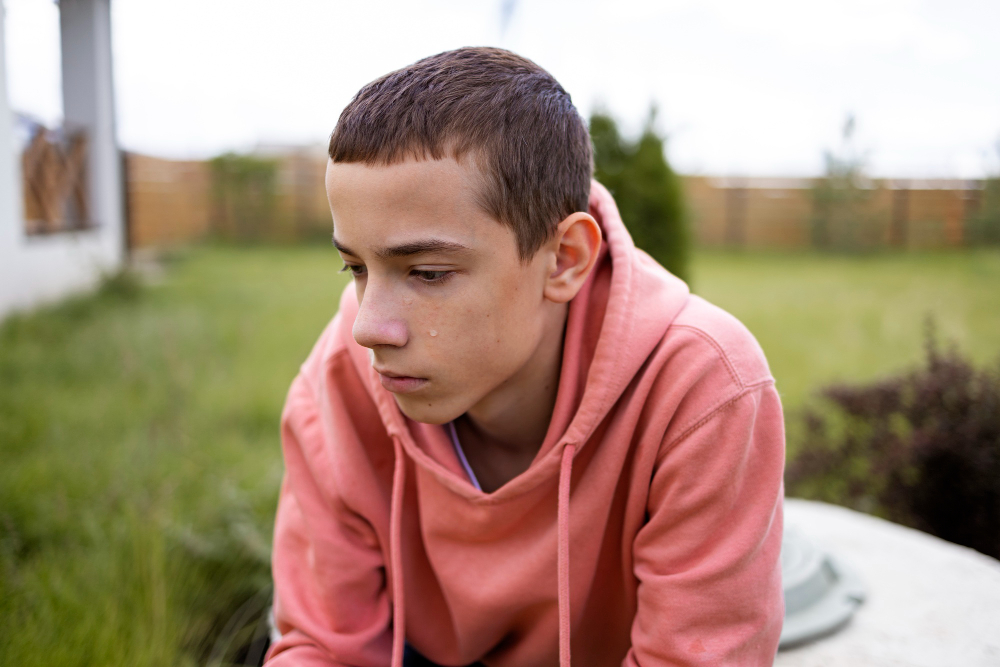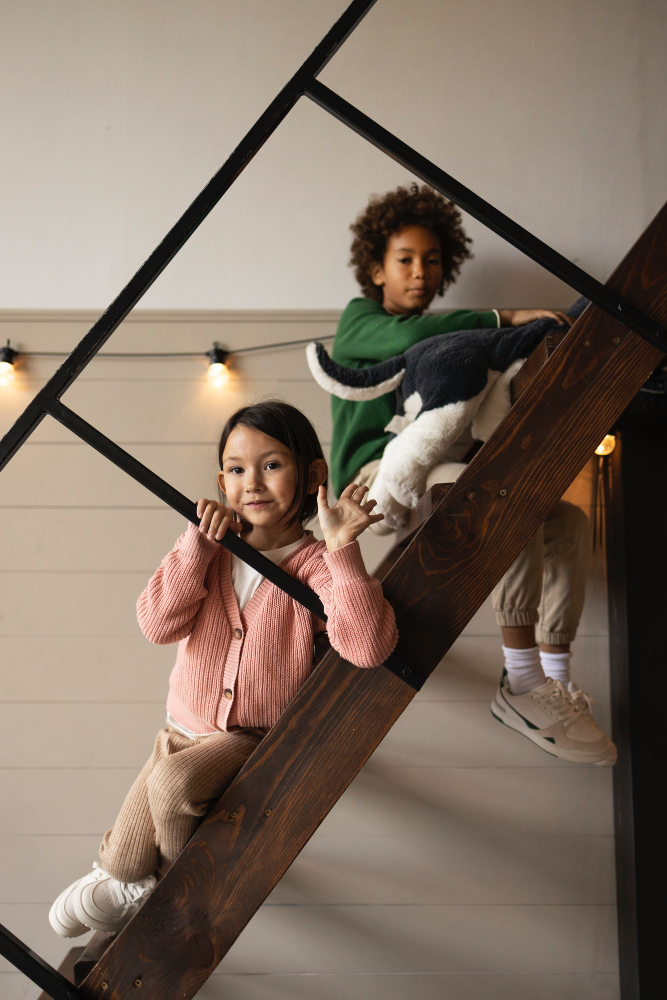Collaborative & Proactive Solutions, developed by psychologist Dr. Ross Greene, is grounded in the belief that children do well if they can—not if they want to—and that most behavioural challenges arise not from defiance or attention-seeking, but from lagging skills in areas like flexibility, frustration tolerance, and problem-solving. At its best, CPS aims to move schools and families away from reactive discipline and toward relational problem-solving through calm, structured conversation between the adult and the child. The approach emphasizes Plan B—a process in which the adult listens to the child’s concerns, shares their own, and works collaboratively to arrive at a mutually satisfactory solution.
Benefits
CPS offers a clear and repeatable structure for replacing punishment with conversation, and it reframes distress behaviours as communication rather than misbehaviour. The model helps de-escalate power struggles by removing threats and incentives, and instead treats the child as a thinking, feeling partner in their own regulation and learning. Many educators find that using CPS builds stronger relationships, reduces the use of suspension and restraint, and increases student buy-in over time. Its step-by-step process provides scaffolding for adults who want to move away from control-based models but aren’t sure how to begin. For students who are verbal, reflective, and emotionally available, the model can support co-regulation and self-advocacy skill development.
Limitations
Despite its gentler framing, CPS can still place a heavy cognitive and emotional load on the child, particularly when they are dysregulated, demand-avoidant, or non-speaking. The model relies on verbal reasoning, abstract perspective-taking, and structured dialogue—all of which are inaccessible or overwhelming for many autistic and neurodivergent children, especially in moments of distress. Although CPS rejects punishment, it still centres the adult’s agenda and frames the desired outcome in terms of solving “unsolved problems,” which may obscure the deeper access needs or trauma histories behind those behaviours. For children with PDA profiles, the invitation to collaborate can itself trigger stress or masking, especially if the adult is subtly steering the conversation toward compliance. In practice, CPS can become another form of soft control when adult-defined goals remain non-negotiable.
Best fit for
CPS is often most effective with students who are able to engage in metacognitive dialogue, tolerate structured discussion, and trust the adult enough to express vulnerability. It can work well for verbal, reflective students who benefit from having a clear framework for expressing frustration and seeking resolution. Educators who are already relationship-focused and who have the time, training, and patience to slow down and listen may find CPS supports a healthy shift in classroom culture. It may also serve as a transitional model for schools moving away from reward/punishment frameworks and seeking a more compassionate, less punitive starting point.
Disability justice alignment
Collaborative & Proactive Solutions (CPS) is often presented as a progressive alternative to punishment, and in many ways it is. But when examined through a disability justice lens—one that centres access, embodiment, interdependence, and the right to exist without performance—it reveals a number of structural and philosophical limitations that deserve careful attention.
The structure can feel invasive, especially for PDAers and sensory-sensitive kids
CPS often plays out as a sit-down conversation, structured by the adult and filled with guiding questions, probing analysis, and scaffolded reflection. But for children with PDA profiles—or those who are autistic, trauma-impacted, or highly sensitive to control—it can feel like an interrogation wrapped in soft language. Even when offered gently, the act of prompting can carry the weight of an invisible demand, especially when the child didn’t initiate the conversation or hasn’t returned to safety. What adults frame as collaboration may land as surveillance, or pressure disguised as care. The mismatch between intention and impact can erode trust.
It assumes that behaviour can always be solved by talking it through
CPS treats behaviour as a signal, which sounds progressive, but still insists that the solution lies in structured, rational dialogue. This approach can leave out children who are non-speaking, selectively mute, emotionally flooded, or in a state of somatic overwhelm. Some internal states are too vast to name, too private to share, or too rooted in the body to be packaged into an answer. When the model leans on verbal problem-solving as the default path forward, it risks pathologising children whose refusal, silence, or dysregulation is their truth in that moment.
It shifts the emotional labour onto the child
By inviting children into “Plan B” conversations, CPS offers a role in problem-solving—but without deep trauma attunement, meaningful scaffolds, or authentic consent, that role can become a burden. Kids may feel responsible for fixing problems they didn’t cause, or expected to generate solutions that keep school running smoothly for everyone else. When they can’t explain, can’t propose, or can’t say the “right” thing, shame fills the space. Neurodivergent kids often learn quickly how to mask their discomfort, give the expected answers, and perform collaboration just to make it end.
It still frames difference as something to fix
CPS replaces punishment with a gentler story: lagging skills, rather than bad choices. But even this framing locates the problem inside the child—labelling frustration, rigidity, or overwhelm as deficits to be corrected. It rarely asks whether the environment itself—the lights, the schedule, the task, the noise—is what needs to change. It still seeks to make the child functional within a system designed without them in mind, rather than questioning the norms that define what “functioning” should look like.
It doesn’t go deep enough on adult power or structural harm
CPS acknowledges that adults have concerns too—but it seldom interrogates where those concerns come from. It leaves intact the structural pressures of schooling: time-on-task, performance metrics, behavioural compliance. It assumes these systems are neutral and unchangeable, and that the child’s job is to find a way to meet them. Disability justice asks something different: not how to fit children into broken systems, but how to transform the systems that break them.
The structure reflects a neuronormative way of thinking and relating
At its core, CPS is built on the assumption that insight leads to change, that problems can be solved through structured dialogue, and that verbal reasoning is the most appropriate route to regulation. These are deeply neuronormative premises—ones that privilege children who process quickly, speak fluently, access emotional awareness on demand, and feel comfortable articulating internal states in adult-coherent ways. The model reflects a very specific worldview: that regulation follows reflection, that talking leads to safety, that understanding is best achieved through naming.
But for many neurodivergent children, particularly those with PDA profiles, alexithymia, or highly localised processing, this logic does not hold. Insight does not always precede action. Words do not always follow experience. In fact, the very demand to explain, especially when dysregulated or emotionally raw, can trigger further collapse. A child who communicates through silence, gesture, movement, metaphor, resistance, or unfiltered sensation is not failing at collaboration—they are offering their truth in the only language they feel fluent in.
Even when CPS claims to be flexible, its structure centres a style of communication and problem-solving that aligns with neurotypical relational patterns: calm back-and-forth dialogue, linear thinking, mutual perspective-taking, and timely verbal repair. These are not neutral capacities—they are culturally and neurologically specific. And when they are treated as the path to progress, children who do not—or cannot—move that way are subtly cast as unready, unskilled, or uncooperative. The model may be kinder than punishment, but it still sets up a hierarchy of minds: some as guides, others as puzzles to be worked through.
In Witnessing: Beyond Recognition, Kelly Oliver argues that the demand for recognition—especially when it requires the other to speak in dominant terms—can become a mechanism of oppression rather than liberation. When children are asked to explain themselves in the moment, using adult timelines, verbal logic, and shared problem-solving scripts, we risk flattening their subjectivity into something recognisable only through compliance. Oliver writes that “the pathology of oppression” stems from systems that demand sameness in order to acknowledge difference—collapsing the other into an object to be known, rather than a subject to be witnessed.
-
Debility versus disability: what the system cannot acknowledge
My son Robin took to bed two weeks before March break. He had been…
True collaboration honours difference in form, pace, and presence
A disability justice approach begins somewhere else entirely. It doesn’t start with the assumption that conflict must be resolved through talk, or that the child must return to adult-defined expectations. It starts with consent. With co-regulation. With an openness to the possibility that connection may unfold slowly, nonverbally, or not at all that day—and that this too is sacred. It treats silence as an answer. It treats “I don’t know” as complete. It treats the body’s refusal as wisdom.
In this frame, support is not a guided conversation. It’s a shared space where the child’s way of processing is trusted. Where their refusal to engage is not a threat to adult control, but a signal that the conditions for true collaboration are not yet present. Where change, if it comes, emerges from relationship—not from strategy.
Can these deficits be mitigated?
Yes—but only through a radical shift in how CPS is implemented and whom it is accountable to. In a disability justice-aligned version, collaboration would begin not with a structured adult prompt, but with the child’s own timing, needs, and modality. Conversation would never be assumed—it would be offered. Verbal negotiation would be replaced or supplemented with pictures, gestures, silence, metaphor, drawing, movement, or simply presence. The goal would not be agreement, but connection—a shared sense that both parties are safe, resourced, and allowed to be fully themselves.
Consent would become foundational—not just for physical interventions, but for every step of emotional labour. And the adult would enter the process knowing that sometimes the answer is no: that some expectations must be dropped, some routines disrupted, some systems reimagined. True collaboration begins when the child is free to disengage. And disability justice begins when the child’s difference is not something to accommodate or remediate, but something to centre, uphold, and follow.
Learn more
- Ross W. Greene, Lost at School: Why Our Kids with Behavioral Challenges Are Falling Through the Cracks and How We Can Help Them (New York: Scribner, 2016).
- Ross W. Greene, The Explosive Child (New York: Harper, 2021).
- Lydia X. Z. Brown, ‘Privilege, Power, and Oppression in the Fight for Neurodiversity’, Autistic Hoya, https://www.autistichoya.com, accessed 25 July 2025.
- Talila A. Lewis, ‘Working Definition of Ableism’, https://www.talilalewis.com/ableism.html, accessed 25 July 2025.
- Jay Timothy Dolmage, Academic Ableism: Disability and Higher Education (Ann Arbor: University of Michigan Press, 2017).
- Jasbir Puar, The Right to Maim: Debility, Capacity, Disability (Durham: Duke University Press, 2017).
- Sara Ahmed, Complaint! (Durham: Duke University Press, 2021).
- Sara Ahmed, The Cultural Politics of Emotion (Edinburgh: Edinburgh University Press, 2004).












